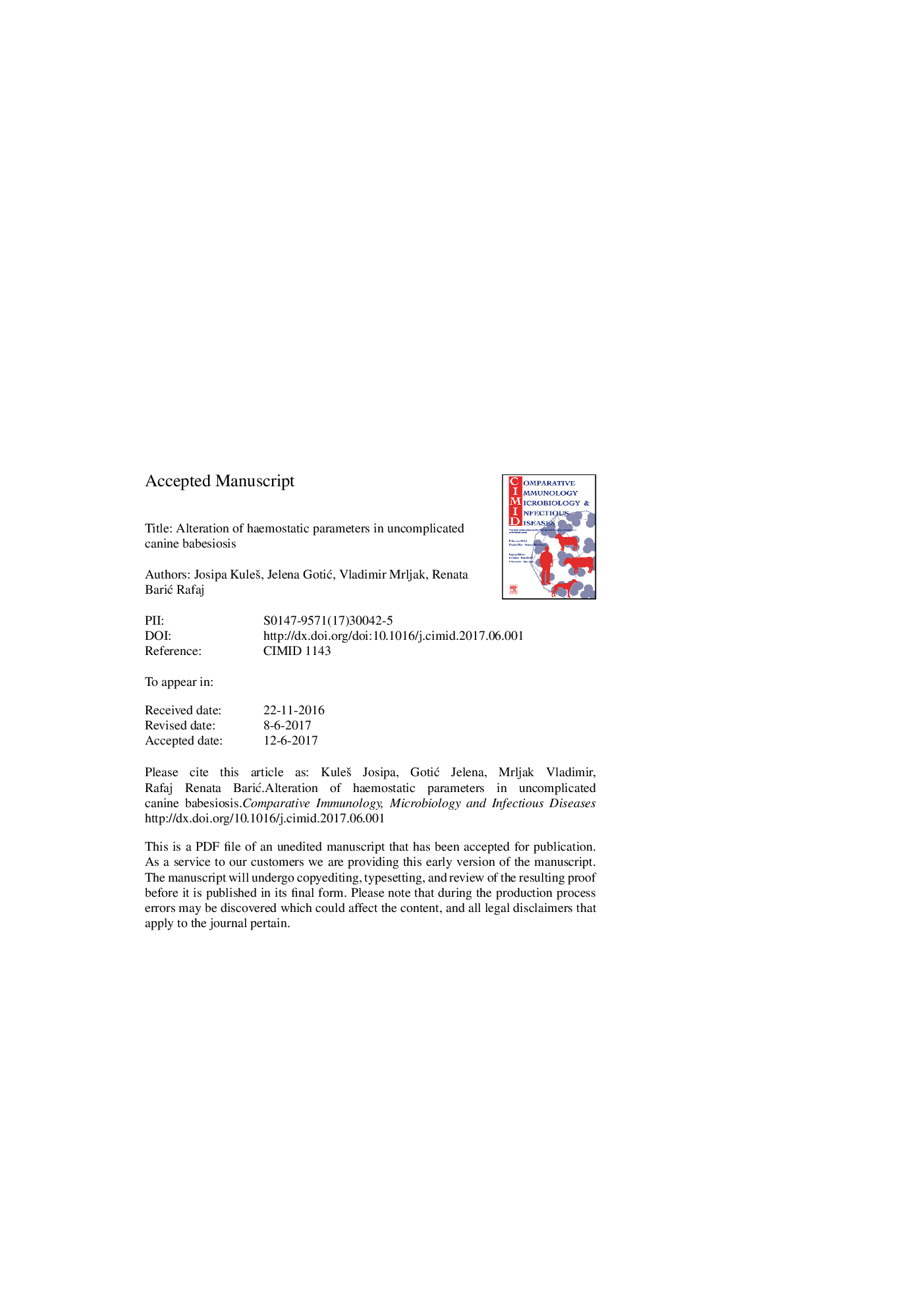| Article ID | Journal | Published Year | Pages | File Type |
|---|---|---|---|---|
| 5539888 | Comparative Immunology, Microbiology and Infectious Diseases | 2017 | 22 Pages |
Abstract
Babesiosis is a tick-borne zoonotic disease caused by haemoprotozoan parasites. The aim of this study were to assess markers of coagulation pathways in 25 dogs with naturally occurring babesiosis caused by B. canis, compared to 10 healthy controls. Protein C (PC) and antithrombin III (AT III) activity were assessed using a chromogenic substrate test, while levels of thrombin-antithrombin (TAT) complexes, activated protein C (APC) and endothelial protein C receptor were assessed using canine-specific ELISA. AT III activity was decreased as a result of a negative acute phase response, degradation by elastase, reduced availability of glycosaminoglycans, and, most importantly, consumption as a consequence of thrombin formation. Procoagulant state and haemostatic shift towards thrombin formation are also demonstrated by elevated TAT levels. Regarding PC pathway only significant difference was found for APC. Taken together, haemostatic alterations in uncomplicated babesiosis represent a procoagulant state that is mostly reversed during treatment.
Related Topics
Life Sciences
Agricultural and Biological Sciences
Animal Science and Zoology
Authors
Josipa KuleÅ¡, Jelena GotiÄ, Vladimir Mrljak, Renata BariÄ Rafaj,
